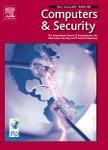版权所有:内蒙古大学图书馆 技术提供:维普资讯• 智图
内蒙古自治区呼和浩特市赛罕区大学西街235号 邮编: 010021

作者机构:Syracuse Univ Sch Informat Studies Syracuse NY 13210 USA US Air Force Res Lab AFRL Informat Directorate Rome NY USA Harding Univ Dept Engn & Phys Searcy AR USA
出 版 物:《COMPUTERS & SECURITY》 (Comput Secur)
年 卷 期:2014年第42卷
页 面:116-136页
核心收录:
学科分类:08[工学] 0812[工学-计算机科学与技术(可授工学、理学学位)]
基 金:Air Force Office of Scientific Research (AFOSR)
主 题:Online social networks OSNs Privacy protection Security Trusted data management
摘 要:Online Social Network (OSN) services have rapidly grown into a wide network and offer users a variety of benefits. However, they also bring fiew threats and privacy issues to the community. Unfortunately, there are attackers that attempt to expose OSN users private information or conceal the information that the user desire to share with other users. Therefore, in this research we develop a framework that can provide trusted data management in OSN services. We first define the data types in OSN services and the states of shared data with respect to Optimal, Under-shared, Over-shared, and Hybrid states. We also identify the facilitating, detracting, and preventive parameters that are responsible for the state transition of the data. In a reliable OSN service, we address that a user should be able to set up his or her desired level of information sharing with a certain group of other users. However, it is not always clear to the ordinary users how to determine how much information they should reveal to others. In order to support such a decision, we propose an approach for helping OSN users to determine their optimum levels of information sharing, taking into consideration the payoffs (potential Reward or Cost) based on the Markov decision process (MDP). As an extension of the MDP-based approach, we also introduce a game theoretic approach, considering the interactions of OSN users and attackers with conflicting interests whose decisions affect each other s. Finally, after developing the framework for the optimal data sharing on OSNs, we conduct several experiments with attack simulation based on the proposed ideas and discuss the results. Our proposed approach has the capability to allow a large amount of variables to be altered to suit particular setups that an organization might have. (C) 2014 Elsevier Ltd. All rights reserved.